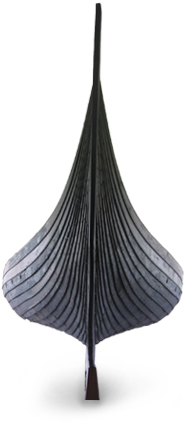The Viking Invasions
 In the late 8th century, Vikings from Scandinavia began to raid Ireland. Other parts of Europe at about this time were responding to such pressures by developing the system of feudalism, but the Gaelic society did not lend itself to such development.
In the late 8th century, Vikings from Scandinavia began to raid Ireland. Other parts of Europe at about this time were responding to such pressures by developing the system of feudalism, but the Gaelic society did not lend itself to such development.
It lacked the heritage of Roman law that provided the framework for feudal institutions elsewhere. Moreover, the elaborate kinship arrangements by which both property-holding and succession to leadership roles were regulated by brehon law may have impeded the exchange of land for military service, which is the fundamental bargain underlying the feudal system. Eventually, Gaelic society did manage to organize resistance: in 1014, Irish forces led by King Brian Boru decisively defeated the Vikings at the Battle of Clontarf.
Brian's tenure (1002-14) of the honorific title "high king of Ireland" is sometimes misunderstood as the seed time of a national monarchy. Actually, the high king's power throughout much of Ireland was insubstantial. Without the infrastructure of feudalism even such a leader as Brian could not make the transition from symbolic kingship to effective monarchy that was beginning in other parts of Europe. Meanwhile, although Viking power was broken, the Vikings had left their mark upon the country by founding Ireland's first cities, including Dublin, Limerick, and Waterford.
